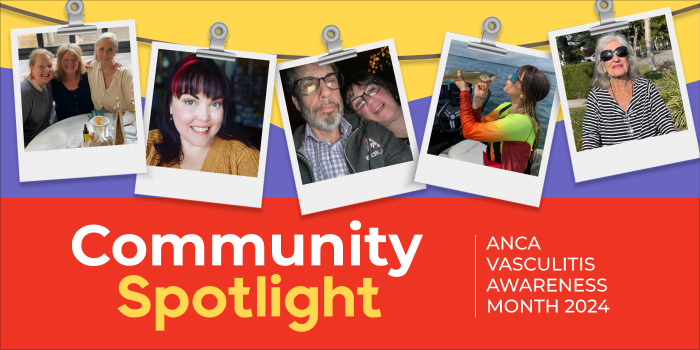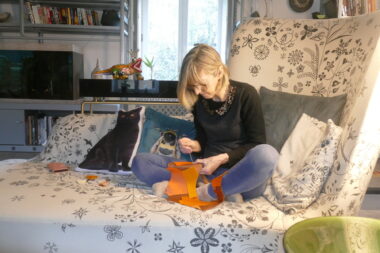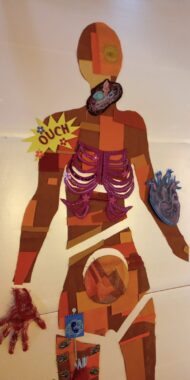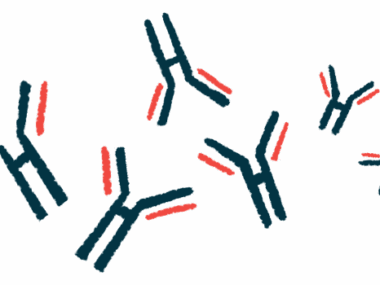Picking up the pieces after my vasculitis diagnosis
Written by |


Janice Barnett poses with a textile piece in the making. (Photos courtesy of Janice Barnett)
This is Janice Barnett’s story:
My diagnosis of eosinophilic granulomatosis with polyangiitis, formerly known as Churg-Strauss syndrome, in December 2021 plunged me into a state of utter disbelief.
I was fit and healthy, in body and mind. I ate pulses and legumes, I exercised, I breathed clean country air, and I had great friends who I laughed with. Any of those “top seven tips for longevity” articles would indicate that this was not meant to happen to me.

Barnett sews on her sofa.
I couldn’t understand what had occurred; anger, frustration, and incredulity prevailed. My idea of self, having been dropped from a great height, lay shattered at my feet in an assortment of disparate pieces that would need to be reconfigured.
With time on my hands, a desire to restore movement in my fingers, and a need to put the voice in my head on mute, I revisited sewing as an action both meditative and mindful. Martha Beck, author of “The Way of Integrity: Finding the Path to Your True Self,” proposes we take anger, a destructive emotion, and turn it into something creative, positive, and healing. To that end, I was determined to translate many destructive emotional responses and fears, through textile art, into something that tells my story.
I felt fractured and unrecognizable, my self-image fragments of a jigsaw puzzle that had been broken up and required reassembly, even though the picture on the box had changed. I began creating a new version of myself, employing slow hand sewing to afford maximum time for contemplation.

Distorted body parts with a corseted rib cage are featured in Barnett’s work.
Body parts affected by my condition became distorted, mutating in my mind’s eye. In configuring a textile version of me, I concede the body parts no longer fit together cohesively.
My heart and little toe swell in my imagination; my tightened rib cage becomes an instrument of torture. My body is a battleground where eosinophils and pharmaceuticals advance and retreat in their campaigns. I am assailant and prey.
I learn that I deal with things by intellectualizing, analyzing, dissecting, researching. My condition has become a course of academic study where emotion plays a secondary role.
I have witnessed the kindness and patience of others and the value of things I took very much for granted.
I have a greater understanding of where my internal organs are situated and the functions of my adrenal glands. The vascular system is no longer a mystery to me. Processed foods have been forever banished from my life.
I have come to realize that creativity is closely entwined with my well-being. Channeling my fears, anger, and frustration through the creative process has given me great pleasure, but also helped clarify and articulate my views. For someone who has always loved words, I found I didn’t have the vocabulary to express how I felt either physically or mentally. I can now illustrate my condition through a new visual language.
My textile work, as I write this, is nearing completion. I realize I remain a work in progress.
In recognition of Vasculitis Awareness Month in May, the ANCA Vasculitis Community Spotlight campaign features a series of stories highlighting the real-life experiences of people affected by vasculitis, written in their own words. Follow us on Facebook and Instagram for more stories like this, using the hashtag #ANCASpotlight, or read the full series.




